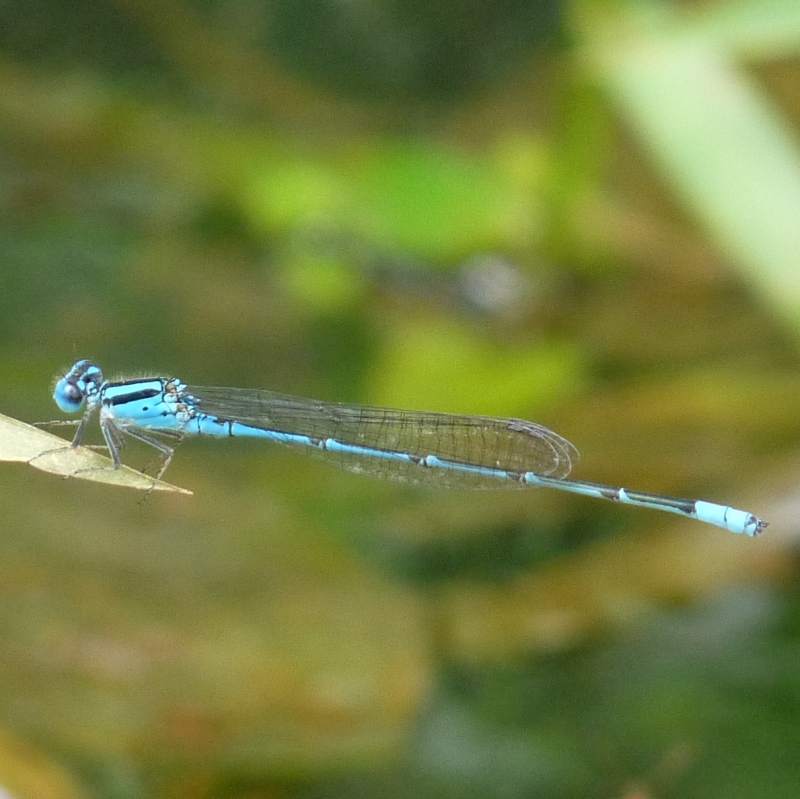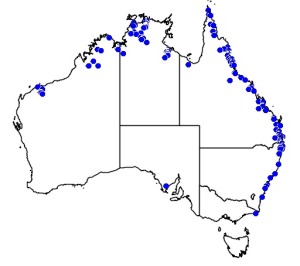Distinguishing features
The male of this damselfly is brightly blue in colour with black pattern on his abdomen. Its head, face, and eyes are also blue.
The female is blue-grey to grey-green in colour. Blue Riverdamsels mate in tandem position. (Wikipedia)
Size
- Up to 3.8 cm (Length of specimen)
Wingspan
- Wingspan data is not yet available.
Synonyms
Distribution
Distribution and habitat preferences
This species can be found in Australian states and they are New South Wales, Northern Territory, Queensland, and Western Australia. It can be found in Asia:Bangladesh, China, Guangxi, Hong Kong, Hainan, Indonesia, India, Japan, Sri Lanka, Myanmar, Malaysia, Philippines, Peninsular Malaysia, Singapore, Thailand, Taiwan, and Vietnam.
This species can easily be found near running water or still water. They usually rest on the plants either in the middle of ponds or at the water edges. (Wikipedia)
Behaviour
On a sunny winter day, this damselfly may be the only damselfly still flying over the water, even though a few of them can be seen. In the summer, a large number of Blue Riverdamsels are competing for a good perching position with other damselflies.
After mating, the female will return to the water and lay her eggs, usually with the male still in the tandem position. They lay their eggs in the plants under the surface of water. Females have a blade-like ovipositor for making an opening in the plant for her eggs. They will sometimes lay eggs alone without the male in tandem position. (Wikipedia)

